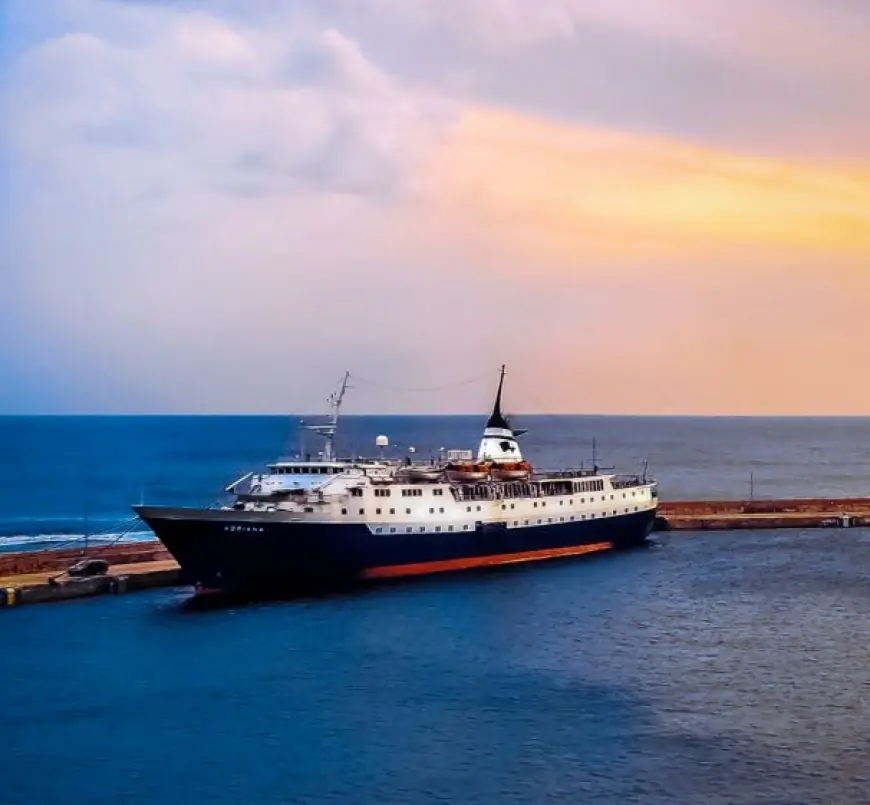Protecting Ports and Naval Bases with Boat Waterside Barriers
Protect your port or naval base with effective boat waterside barriers from Halo Arabia. Enhance security and prevent threats today!

Ports and naval bases are vital infrastructure components that require robust security measures to prevent unauthorized access, terrorist threats, and accidental intrusions. With the increasing frequency of maritime security threats, implementing effective defense mechanisms has become a top priority for governments, military organizations, and commercial port operators. One of the most effective solutions for safeguarding these facilities is the boat waterside barrier.
A boat waterside barrier serves as a physical deterrent against unauthorized vessel entry, helping to secure restricted areas and enhance overall maritime safety. These barriers are deployed in military installations, commercial ports, energy facilities, and other high-security maritime zones. In this blog post, we will discuss the importance of boat waterside barriers, their various types, key benefits, and best practices for implementation.
Importance of Boat Waterside Barriers
1. Preventing Unauthorized Vessel Access
Maritime security breaches pose significant risks to ports and naval bases. A boat waterside barrier ensures that unauthorized vessels are kept at a safe distance, reducing the likelihood of security threats and accidental collisions.
2. Enhancing National and Commercial Security
Naval bases house critical defense assets, including warships, submarines, and weapons storage facilities. Unauthorized access to these installations could compromise national security. Similarly, commercial ports handle high-value goods and large volumes of cargo, making them potential targets for smuggling and terrorism.
3. Reducing Environmental and Collision Hazards
Unauthorized or rogue vessels can cause significant environmental damage, such as oil spills, chemical leaks, and damage to marine ecosystems. A boat waterside barrier acts as a preventive measure against these risks while also ensuring the safety of docked ships.
Types of Boat Waterside Barriers
1. Floating Barriers
Floating barriers consist of interconnected buoyant structures that create a visible and physical boundary on the water. These barriers are ideal for ports and naval bases as they can be adjusted or relocated as needed.
2. Fixed Barriers
Fixed barriers are permanent installations, typically made of reinforced concrete or heavy-duty steel, designed to prevent unauthorized vessels from breaching security perimeters. These barriers provide long-term protection but lack flexibility.
3. Net Barriers
Net barriers are designed to block small boats and underwater divers attempting to infiltrate high-security areas. These barriers are particularly useful for military installations and energy facilities.
4. Retractable Barriers
Retractable barriers offer controlled access to ports and naval bases. They can be deployed or retracted based on security needs, allowing authorized vessels to pass through while keeping unauthorized ones out.
Benefits of Boat Waterside Barriers
1. Increased Maritime Security
By limiting vessel movement, a boat waterside barrier enhances the security of ports and naval bases. These barriers integrate well with surveillance and monitoring systems, providing an additional layer of protection.
2. Quick Deployment and Versatility
Many waterside barriers are designed for rapid deployment, making them ideal for emergency situations or temporary security needs. Their modular designs allow for scalability and adaptability.
3. Cost-Effective Security Solution
Compared to high-tech maritime security systems, boat waterside barriers offer a cost-effective solution for protecting ports and naval bases. Their durability and minimal maintenance requirements make them a practical long-term investment.
4. Compliance with International Security Standards
International maritime security regulations, such as the International Ship and Port Facility Security (ISPS) Code, require stringent security measures. Deploying boat waterside barriers helps ports and naval bases comply with these standards while enhancing their security infrastructure.
Best Practices for Implementing Boat Waterside Barriers
1. Conduct a Comprehensive Security Assessment
Before installing a boat waterside barrier, it is crucial to conduct a thorough security assessment. This assessment helps identify potential vulnerabilities and determine the best type of barrier for a given location.
2. Integrate with Surveillance and Detection Systems
A boat waterside barrier works best when combined with advanced surveillance technologies, such as radar, CCTV, and automated alert systems. This integration ensures real-time threat detection and rapid response.
3. Ensure High Visibility and Proper Marking
To prevent accidental collisions, waterside barriers should be clearly visible. Reflective markers, warning signs, and navigation lights should be used to enhance visibility, especially at night.
4. Regular Maintenance and Inspections
To maintain effectiveness, boat waterside barriers require periodic inspections and maintenance. This includes checking for wear and tear, repairing damaged components, and ensuring that barriers remain structurally sound.
5. Training Security Personnel
Security personnel should be well-trained in monitoring and managing boat waterside barriers. Proper training ensures quick response times and improved security operations.
Real-World Applications of Boat Waterside Barriers
1. Naval and Military Base Security
Military installations rely on boat waterside barriers to protect critical defense assets and prevent unauthorized vessel access. These barriers provide a first line of defense against maritime threats.
2. Commercial Port Protection
Cargo terminals, docking areas, and shipping lanes benefit from waterside barriers that prevent smuggling, unauthorized vessel entry, and potential terrorist activities.
3. Energy Infrastructure Security
Oil rigs, refineries, and LNG terminals deploy boat waterside barriers to protect against unauthorized vessel access, ensuring the safety of critical energy infrastructure.
4. Event Security and Temporary Installations
For major maritime events, such as naval exhibitions or international trade summits, temporary boat waterside barriers are deployed to regulate vessel traffic and enhance security.
Conclusion
As maritime security threats continue to evolve, implementing effective security measures is crucial for safeguarding ports, naval bases, and commercial harbors. A boat waterside barrier serves as a critical defense mechanism, preventing unauthorized access and protecting valuable maritime assets.
By deploying high-quality boat waterside barriers, ports and naval bases can significantly enhance their security while ensuring compliance with international regulations. For organizations seeking reliable maritime security solutions, Halo Arabia offers state-of-the-art boat waterside barrier systems tailored to meet specific security needs.
What's Your Reaction?
 Like
0
Like
0
 Dislike
0
Dislike
0
 Love
0
Love
0
 Funny
0
Funny
0
 Angry
0
Angry
0
 Sad
0
Sad
0
 Wow
0
Wow
0
















































